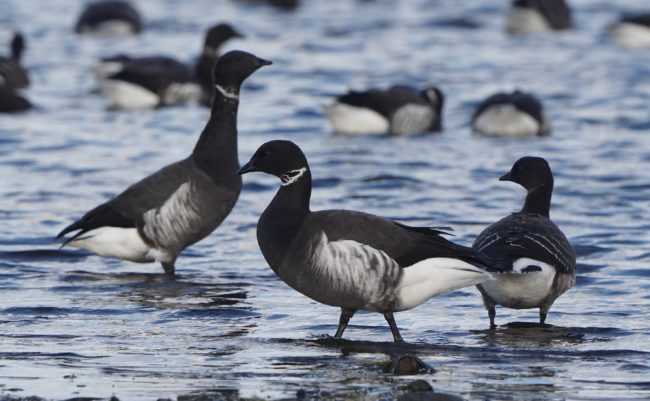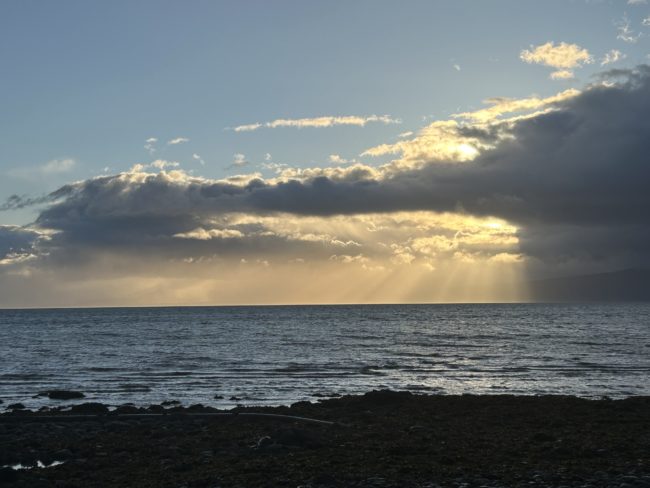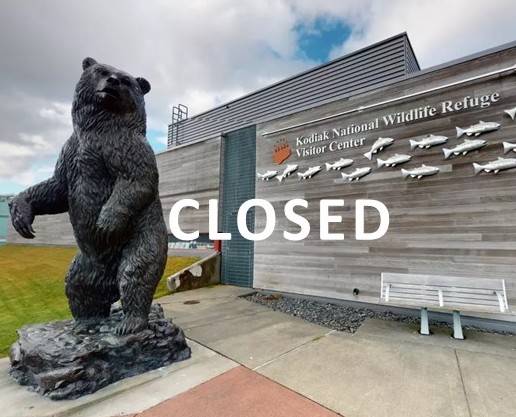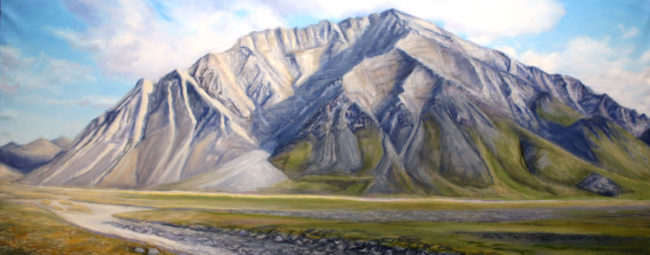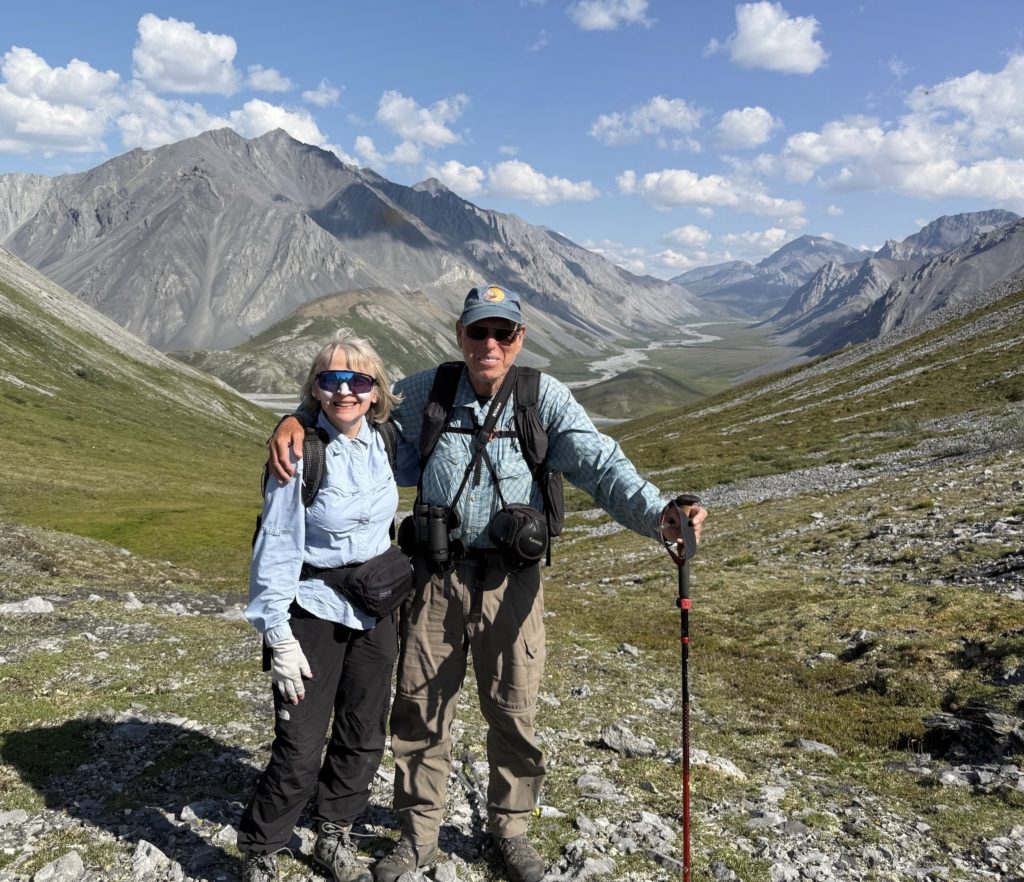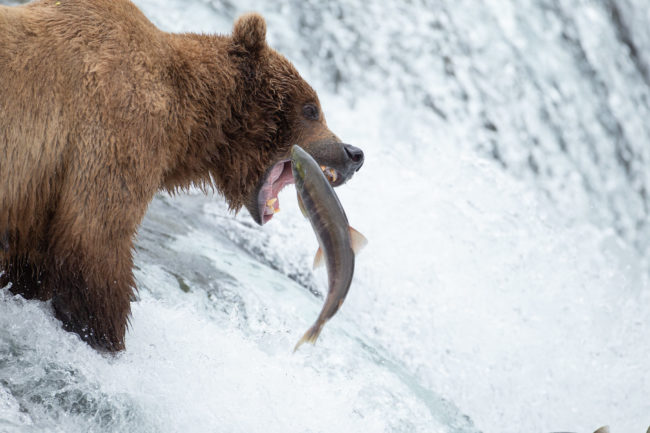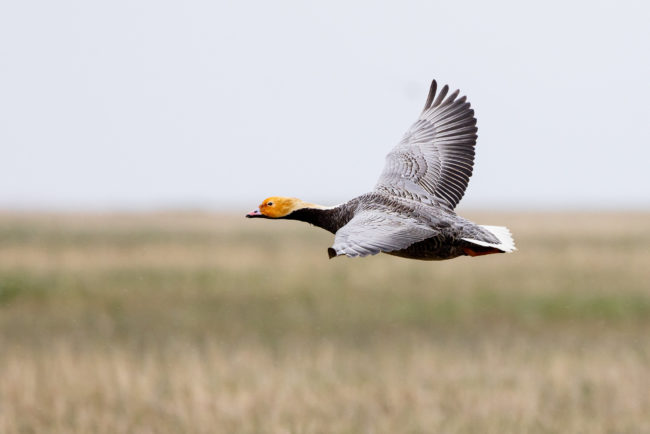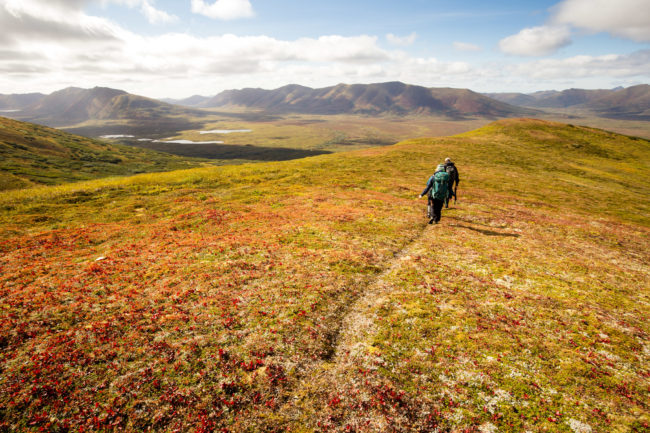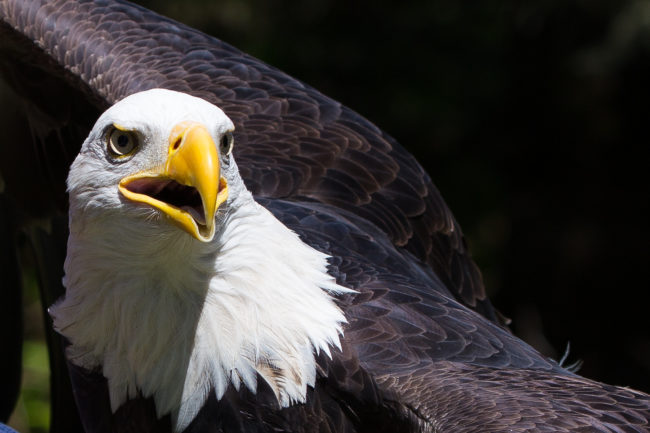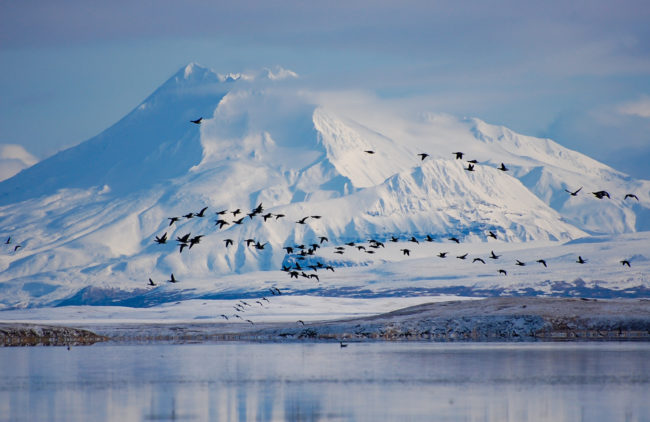November Advocacy Column
By Nancy Lord, Advocacy Committee Chair
In this challenging time, it’s difficult for all of us to know where to best put our energies. It’s easy to be so overwhelmed that we can be tempted to go silent.
Many of us last month were disheartened when the Secretary of the Interior Douglas Burgum announced, on what he called “Alaska Day,” orders to proceed with oil and gas and mining projects and road-building through and on conservation lands. These lands include the Arctic National Wildlife Refuge, Izembek National Wildlife Refuge, and Gates of the Arctic National Park.
Bergum announced signing an order to reopen the entire 1.56 million acre coastal plain (1002 area) of the Arctic National Wildlife Refuge to oil and gas development, reversing a Biden administration decision. He also announced signing an Agreement for the Exchange of Lands which completes the transfer of land out of the Izembek Refuge with transfer of title to the King Cove Corporation (KCC) for the purpose of building a road across the refuge including a portion designated Wilderness. The approved Ambler Road that will pass through Gates of the Arctic will also affect refuge lands in northern Alaska by increasing access, interrupting migration routes and crossing through watersheds that drain into the Kanuti, Koyukuk and Selawik refuges.
Importantly, all these lands were protected as conservation units by the Alaska National Interest Lands Act (ANILCA) of 1980. To so greatly erode their purposes—and the intent and interests of the American people—is not only a loss in Alaska but a precedent for doing more of the same on public lands throughout the country.
The Alaska delegation stood with the Interior Secretary and nodded vigorously during his announcements, eager for their visions of economic development in the state. They must hear from us to know that “drill baby drill” is not the position of all Alaskans and Americans. The fight is not over, as there will be environmental safeguards to try to secure as these projects advance. There will also be litigation, as the government tries to fast-track these projects by eliminating regulations.
Please take a few minutes this month to send a simple message to remind Congress of what we value. Something like, “Please protect our public lands including our national wildlife refuges, parks, and forests! These belong to all Americans and the generations to come and should not be degraded for short-term exploitation of their resources.” Personalized messages—like whether you hunt or fish or visit refuges to watch wildlife and birds, etc.–are always most effective.
Alaska’s two senators are Sen. Lisa Murkowski; 907-271-3735 and Sen. Dan Sullivan; 202-224-3004. Our House member is Rep. Nick Begich; 202-225-5765.
You can also reach them or any state’s delegation at the Capitol switchboard at 202-224-3121.
Photo Caption (above)
Nearly the entire world’s population of Pacific Black Brant were in the lagoons of Izembek in the past few weeks. One of the administration’s actions this month was transfer of title to land within the Izembek National Wildlife Refuge to the King Cove Corporation so that a road could be built dividing the narrow neck of land between two world class eel grass lagoons. PC Alison Williams/USFWS
October Advocacy Report
by Nancy Lord, Advocacy Committee Chair
The Friends advocacy committee continues to meet frequently and to organize, coordinate, report, comment, and advocate on numerous fronts.
- We continue to track the two major issues we are involved in with coalitions and prepare to respond to decisions and outcomes. For Izembek Refuge, we await a decision from the federal government, which is expected to approve a land exchange which would allow a road to be built across a narrow isthmus between two lagoons with world-class eelgrass beds in the heart of the Izembek National Wildlife Refuge. The purpose of the Refuge is the conservation of not only waterfowl and shorebirds but also salmon, brown bears, and the caribou herd that migrates across the isthmus. Building a road there will have tremendous impacts on fish and wildlife habitat and could also greatly increase both disturbance and hunting pressure beyond current subsistence use. Trading the ownership of refuge lands that Congress designated for conservation and as a wilderness area is a terrible precedent for the privatization of public lands for development that is incompatible with both refuge and wilderness lands.
- In the Arctic National Wildlife Refuge, AIDEA (the Alaska Industrial and Export Authority, a state agency) is set to begin seismic surveying on coastal plain leases. The Administration intends to open the entire coastal plain (1002 area) to additional oil leasing, and the reconciliation budget bill passed in July mandates that four new lease sales be held in the refuge within the next seven years.
- We are talking with and collaborating with partners to amplify our messaging and to otherwise support public lands. These include the National Wildlife Refuges Association, Americans for Alaska, American Hunters and Anglers, Backcountry Hunters and Anglers, and the Alaska office of the National Parks Conservation Association.
- New threats to our refuges emerge almost daily. Most recently, the Trump Administration approved the Ambler Road, which will allow an industrial mining road to pass through the watersheds of several nearby refuges as well as through the Gates of the Arctic National Park. The government shut-down also endangers the refuges by closing visitors centers and furloughing employees, including those who monitor refuges and prevent damages to their resources. It remains to be seen whether additional lay-offs and budget cuts will follow.
- Please keep abreast of events by following us on Facebook, Instagram, and our website. By sharing factual information about our refuges and by contacting elected officials, we can each be an advocate!
Shutdown! Cancelled! Closed!
Federal Shutdown Demonstrates the Importance of Refuge Staff
The federal government shutdown that has come down hard on Alaska’s National Wildlife Refuges is a forewarning of the consequences of another budget cut. Most staff were sent home two weeks ago and are not being paid. Those deemed “essential staff,” which usually means the refuge manager and possibly a maintenance worker, must keep working through a shutdown although they aren’t being paid either.
Visitor centers that would normally be open in the winter are shuttered – in Homer (Alaska Maritime Refuge), Soldotna (Kenai Refuge) and Kodiak. All public programs are canceled, including school programs, community programs, and special events like Migratory Bird Day. Field work is paused, except for that mandated by legislation such as what’s required to run the trapping season in the Kenai Refuge or the biological work necessary to support hunting seasons such as Izembek Refuge’s annual Pacific Black Brant population study. This is the only field work going on but the staff or contractors involved are at least being paid. Refuge land, trails, campgrounds, and public use cabins are still open to the public but there is no maintenance, so if you visit, please bring your own toilet paper, take out your own garbage and please treat facilities with care.
Shutdowns are hard on staff. All projects and forward momentum are lost. Inevitably federal dollars are wasted in a budget environment where there was so little to begin with. On top of what the refuge staffs have already been through this year, this is a tougher one than most. So far, it doesn’t seem like any staff have been terminated, which would be illegal, but is happening in other agencies. Any further reductions in the refuge budget for FY26 will be even harder on staff.
Please help so that Refuge staff can go back to work and keep doing what they love – caring for our refuges and sharing their wonders with school children and visitors.
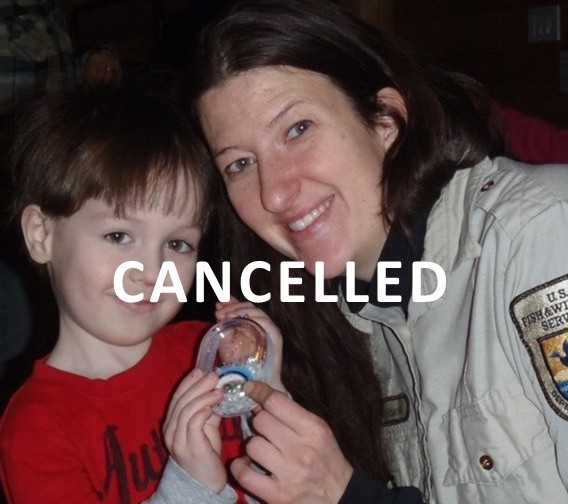 What You Can Do:
What You Can Do:
1) Document the impacts of the shutdown. If the lack of Refuge staff impacts your use of refuges, visitor centers or educational programs or has an economic impact on you or your business, please send notes to Friends so we can elevate them in advocacy with policymakers.
2.) Call, email, or meet with your U.S. Senators and Representatives. Ask for their support to pass a continuing resolution (CR) that funds the U.S. Fish and Wildlife Service and its National Wildlife Refuge System, and to include language safeguarding federal fish and wildlife management in any budget negotiations. Share specific local impacts you or your community are seeing (e.g., closed Refuge offices, cancelled programs, vandalism, lack of maintenance, lack of information about hunting and fishing seasons, disrupted collection of necessary biological data). Encourage them to press for protections in any subsequent appropriations package. Yes, I think it’s important to make clear that the CR is not the end of it.
Arctic Refuge: Art and Advocacy, Sept. 6 in Homer
August Advocacy Report 2025
By Nancy Lord, Advocacy Committee Chair
Here are updates on issues with which we’re engaged.
FY26 Refuge System Budget: The House and Senate Appropriation Committees marked up the budget bills to provide $505 and $525 million respectively to the Refuge System, compared to $550 in FYs 24 and 25. Senator Murkowski played a key role in the Senate committee. After the August Congressional recess, both bodies will resume budget work, but it’s unclear whether a budget will be agreed upon or whether we may expect a continuing resolution or a government shutdown.
Izembek Refuge Road: This is an on-going issue with a coalition of partners. Survey work for the proposed road is underway. Hearings on a land trade will be held Aug. 18-21.
Arctic Refuge (with Arctic Defense Coalition):
Friends is involved in the Trustees of Alaska’s appeal to the Dept. of Interior’s decision to reinstate the oil leases that were previously cancelled. Seismic work is underway. The reconciliation bill passed by Congress requires four new lease sales in the refuge within the next seven years.
Other issues receiving our attention and involvement include the proposed Johnson Tract Mine (potential impact on the Alaska Maritime Refuge’s Chisik Island), Selawik Refuge Broadband Project (80 miles of overland cable), oil and gas exploration drilling on state land adjacent to Yukon Flats Refuge, predator control on state lands adjacent to refuges, and several administrative actions including one designed to control refuge visitor center exhibits and signage.
July Advocacy Report
I’m writing this on July 4, a day we normally celebrate for our American freedoms. This year is different. Today, President Trump signs the big bill that encompasses his agenda for reforming American life. In nearly a thousand pages, policy and funding changes will influence nearly every aspect of our lives, including the management of our public lands.
This comes on top of what we’ve already experienced in the refuges–huge staff losses through unrelenting pressure, incentives to quit and firings, a hiring freeze, and interference with public communications, exhibits and programming. The bill mandates the opening of public lands to increased extractive industries with reduced environmental oversight or mitigation and curtails scientific research–especially anything related to climate. Incentives for wind and solar projects have been replaced with incentives for fossil fuels.
An effort to sell off public lands was successfully beaten back but may well return in another place or form. One proposal would administratively transfer BLM lands in Alaska to the state to expedite development projects.
Your Friends organization has repeatedly reached out to Alaska’s congressional delegation to emphasize the importance of our refuges and the need to fund their protection and management, not just for their resident fish and wildlife but for human visitors, communities, and future resilience. We asked you, our Friends, to do the same.
Alaska Senators Murkowski and Sullivan and Representative Begich all fell in line with the Republican party to approve the bill. They are particularly happy with the requirement that four lease sales be scheduled within the Arctic Refuge (as well as others in sensitive areas in Alaska) and the loosening of environmental regulations. They consider it a win to “unlock Alaska’s resources.”
While close analysis of the bill’s provisions and their specific effects is just beginning, we can say for sure that Alaska’s public lands are and will be losing the protections and management that they require.
While it’s easy to be discouraged, we must not let up our advocacy!
Please continue to let your elected representatives know that you value our refuges and all they provide for wildlife, environmental quality, recreation, public enjoyment, and the future. Their values cannot be maintained without adequate funding and staffing, adherence to environment laws, and mitigations for environmental harm. Stress that climate change in the north is a very significant threat, not only to plants and wildlife but to the safety of people and the future of the entire warming planet!
Please visit our website regularly for updates and action alerts, and do the same by friending us on Facebook.
And make sure you get out this summer to enjoy some reflective time in one or more of our national wildlife refuges. Join us this Saturday on the Kenai Refuge to recharge with other refuge supporters. Be especially kind to refuge staff who are working very hard in difficult circumstances.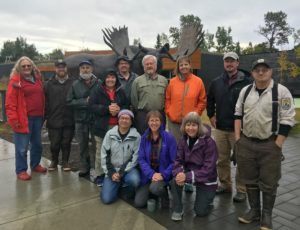
The Kenai National Wildlife Refuge staff on this nearly two million acre refuge is down to 19 employees from the 33 who worked there at this happy time when Friends helped them on a trail clearing project in 2017 (pictured here). With that staff they manage incredible varied habitat and wildlife resources including important salmon runs, a dense moose population, caribou, Dall sheep, bears, eagles and waterbirds and a large public use program of visitor centers, campgrounds, public use cabins, an extensive trail network and two canoe systems all of which attracts a million visits a year from all over the country.
It is Time to Speak up for Alaska’s National Wildlife Refuges
 Loading...
Loading...
March Advocacy Report
By Caroline Brouwer, Advocacy Chair
Friends, this is a call to action. Our elected leaders are in the process of dismantling large swaths of the federal government, and public lands are high on their target list.
National wildlife refuges are YOUR lands. National parks are YOUR lands. National forests are YOUR lands. You should be able to visit, hunt on, birdwatch on, and hike on these lands. You should be able to expect these beautiful landscapes, rich wildlife habitat and the wildlife species that call them home to be well managed for the purposes laid out by Congress in their establishment.
In the past eight weeks, many thousands of federal employees have been illegally fired. There seems to be no rhyme or reason to these firings, and they are cutting deeply into the services that you, an American taxpayer, should be receiving. At least 12 Fish and Wildlife Service staff in Alaska were fired, four of them from refuges. In addition, about 14 have taken the “Fork in the Road” (resignation with several months of pay) buyout offers. Others have had positions that were offered and accepted rescinded, some as they were packing to move to Alaska and important positions like refuge managers are not being filled! It is a chaotic situation and difficult to determine just how many employees we have lost. Fish and Wildlife Service leaders are required to submit plans March 13 about how to further downsize. We expect many more people to be terminated in reduction in force actions or early retirements.
We expect these reductions in the workforce will lead to minimal to no management on Alaska’s 76 million acres of refuges. The Fish and Wildlife Service goes into this in a weakened position as refuge staff had already been reduced 30% over the last 15 years. An important refuge like the two million acre Kodiak Refuge home to the largest brown bears now has only 7 staff where five years ago it had 14. Only one staffer (they used to have 4) covers visitor services managing their visitor center (30 cruise ship visits per year), outreach to eight villages on the refuge, public use cabins, bear viewing sites, and over 100 special use permits to be evaluated and administered annually (bear viewing, float plane transporters, set net sites, research projects, hunting guides), and a formerly-active environmental education program. Because of these ongoing cuts, the Kodiak visitor center has been closed all winter for the first time and Salmon Camp, one of the oldest and best children’s refuge education programs, has been reduced from five week long sessions in Kodiak city and the villages to three short visits to villages. The enthusiastic young woman Kodiak had just hired to manage the visitor center and start supplying services to the public again was fired one month into her job by DOGE in the Valentine’s Day Massacre.
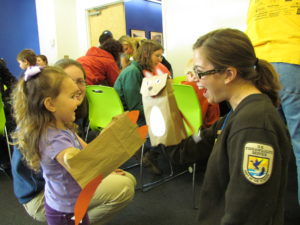
It takes staff to manage a refuge and help the public responsibly enjoy and learn about the wonders of the refuge. Salmon Camp on the Kodiak Refuge was one of the most successful programs serving more than a hundred families a year, many of them from the Coast Guard Base Kodiak. With the public use staff cut from four to one, Salmon Camp in Kodiak City is no more. Salmon Camp in the outlying villages is hanging on due to the efforts of our partners at Koniag Native Corp.
These cuts will affect all public land users, and biological work that keeps our wildlife safe. Next, Congress and the Administration may question why we are holding on to these lands that are “unproductive” and unmanaged. And after that, Friends fear they may add oil and gas as a purpose for all refuges as they did during the first Trump term for the Arctic Refuge, sell off some refuges for development, permit mining, and allow “intensive management” (such as predator control) which is contrary to the refuges’ purpose of maintaining natural biodiversity. Even if refuge lands are not sold, there will be few refuge staff left to protect the original purposes of refuges. These are OUR refuge lands, park lands, and forests. The Administration has already announced plans to heavily log national forests and suspend provisions of the Endangered Species and Migratory Bird acts.
We need you to call your Congressional representatives. Every day. Ask that the staff fired under DOGE be rehired, the vacated positions be refilled, the refuge manager positions filled (only 7 managers for 16 refuges) and credit card use restored so they can buy supplies for the rapidly approaching field season (DOGE put a $1 limit on credit cards). Remind them that you value refuge employees and the work they do to protect wildlife and refuges. Refuges are not for sale! Many members of Congress are starting to complain that they are getting too many phone calls. Good. These elected officials work for US, and they should respond to us, their constituents, not the President. We cannot allow them to dismantle public lands.
Alaska’s two senators are Sen. Lisa Murkowski and Sen. Dan Sullivan. Our House member is Rep. Nick Begich. You can also reach them or any state’s delegation at the Capitol switchboard at 202-224-3121.
If we do nothing, and do not use our voices to speak up in protest, we predict that we will lose many of the public lands and the values they protect that make Alaska great.
February Advocacy Report
The President’s Message
By Marilyn Sigman, President Friends of Alaska National Wildlife Refuges
There has never been a time like the present in my lifetime when National Wildlife Refuges—and their hard-working staff dedicated to carrying out the mission of the Refuge system—need friends who share the mission of stewardship of these lands and waters. Many of our members have spent part or all of their careers working in fields related to fish, wildlife, and habitat conservation. Others of you have joined Friends because you enjoy spending time outdoors hunting, fishing, hiking, birdwatching, and canoeing on refuges. You have responded to our calls in the past to speak out to our elected officials in support of good refuge policies and public land management actions. But now the entire system and its mission is under attack.
We are faced with an Administration that is likely to cut the federal budget more deeply than it has already been cut, which has already left Alaska’s refuges woefully understaffed to do the necessary research, conservation work, and outreach and education that promotes long-term stewardship. The Kodiak Refuge Visitor Center has already cut back with a seasonal closure and refuge outreach and education programs in Fairbanks have been canceled indefinitely. Oil and gas development is being targeted on all federal lands. Future layoffs could mean shuttering refuge facilities completely. Some refuges in Alaska are heavily visited, such as Kenai and Alaska Maritime, but others are used almost solely by subsistence users. Visitors would still be able to access refuges, but without any staff on site, we can anticipate increased poaching, garbage dumps, and other illegal uses of refuge lands.
What can we do? An immediate advocacy action you can take is to send in comments on the Izembek road draft Supplemental Environmental Impact Statement by this Thursday, February 13. Please click the link below to comment. Tell the Administration to choose the no-action alternative.
The Friends Board is committed to developing fund-raising strategies to greatly increase the amount of financial aid we can provide to refuges. If you would like to be involved in this effort, please contact a Board member.
I urge all of you to be friends to the Refuge staff who are feeling attacked by buyout demands and the removal of all references to climate change and the importance of diversity, equity and inclusiveness in the federal workforce as well as the participation of the diverse stakeholders in refuge management. Call, text, or send a thank you email to staff members you know or may have worked with as a Friends’ volunteer. We will also need more volunteers, so look for opportunities posted on the Friends website.
I urge all of you to be a friend to Alaska’s National Wildlife Refuges by writing and calling your Congressional representatives. For Alaskans, Senators Murkowski and Sullivan and Congressman Begich have the power to stop these impacts to OUR refuge lands as do the representatives of Friends’ members in other states. The Capitol switchboard is 202-224-3121.
I urge you to be persistent and relentless in speaking up about what is so valuable about the refuges and the mission of stewardship of these unique conservation lands.
January Advocacy Report
| |
|
